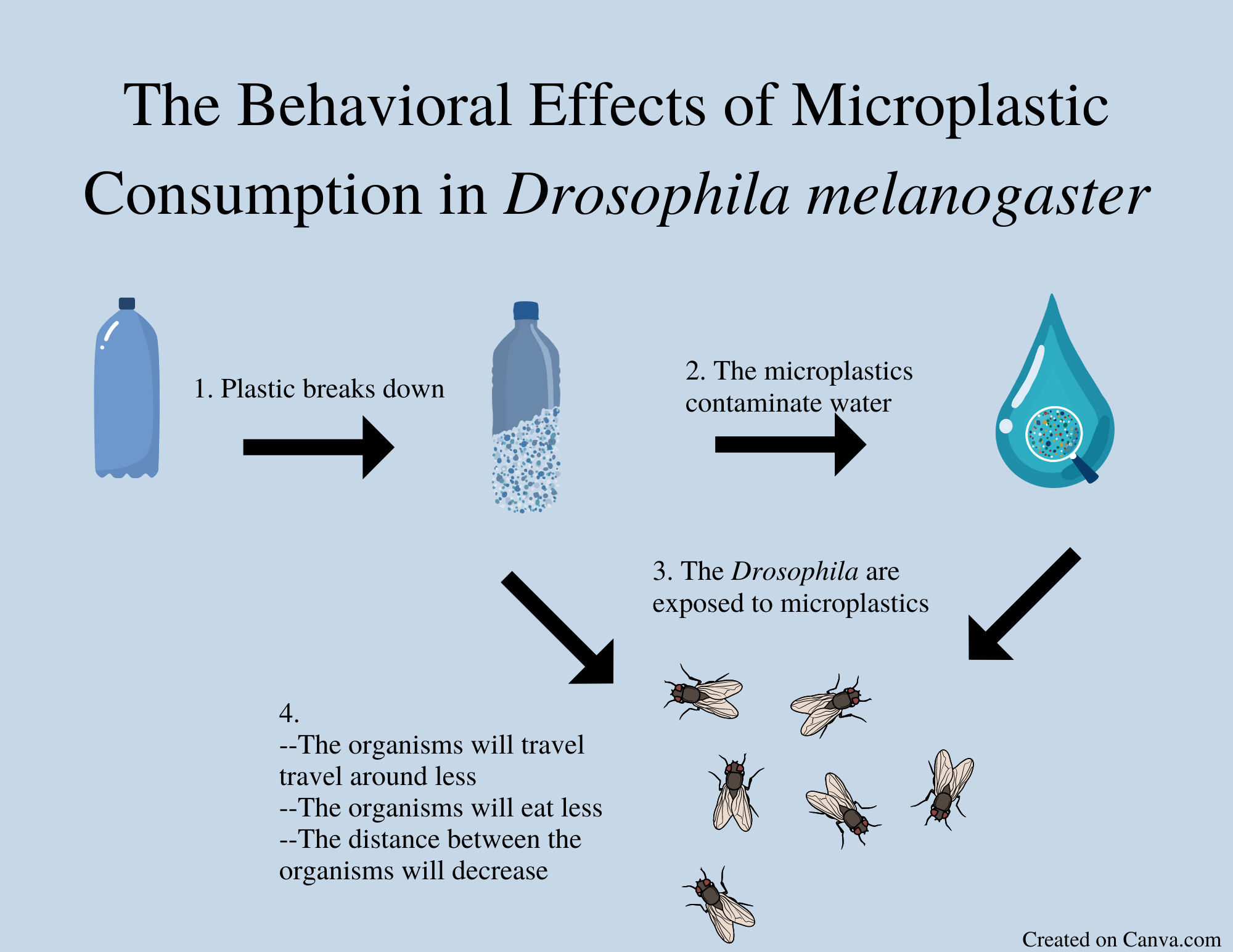STEM with Science and Technical Writing
is taught by Dr. Crowthers. In STEM, we learn methods, tips, and
tricks to help us become better researchers and engineers. Alongside
this research, we learn how to properly write up our methods and
findings. STEM I is focused on an independent STEM research project.
After five months of brainstorming, researching, testing, and drawing
conclusion, all students present their results at a science fair in
February.
Plastic exposure and consumption is at an all time high and it only
stands to increase as humans produce more plastic. Plastic
consumption occurs when larger pieces of plastics break down into
microplastics; the number of microplastics has increased so much that
humans are consuming 39,000 to 52,000 particles annually (Cox et al.,
2019). This is alarming as the compounds found in plastics have
already been found to have adverse side effects on humans. These
substances have been labeled carcinogenic to humans and have been
linked to disrupting the endocrine system, reproductive system,
nervous system, and more (Husain et al., 2015). This project builds
off of previous research by utilizing the model organism
Drosophila melanogaster to quantify the behavioral changes that
occur as a result of microplastic consumption.
Click here for
additional supporting documents.

Human activity has caused an increase in
microplastics, leading to millions of microplastics ending up in
oceans worldwide. As a result, microplastic exposure, including
consumption, is inevitable. The substances in plastic have been found
to cause adverse physical effects, some of which are altering the
nervous system or causing cancer. This project aims to connect
polyethylene, the most commonly used plastic worldwide, with a change
in behavior. In order to quantify a change in behavior, the model
organism, Drosophila melanogaster, will be exposed to polyethylene
wax particles during their egg, larvae, pupae, and adult stages.
After the Drosophilae reach maturity, three assays will be conducted
in order to look at three behaviors: locomotion, feeding, and social
interaction. It was observed that Drosophila exposed to microplastics
travelled less distance, consumed less food, and had abnormal social
interactions. These findings demonstrate that there are behavioral
concerns about plastic exposure. The methods used in this research
can be manipulated by using different concentrations, mixtures,
exposure periods, and types of plastics in order to see if those
results remain consistent with the findings in this study. Future
research could also investigate possible treatments to reverse the
behavioral changes that occur as a result of microplastic exposure.
If Drosophila melanogaster organisms are exposed to
polyethylene microplastics, then the organisms will move around less,
the organism will eat less, and the social distance between the
organisms will be smaller.
